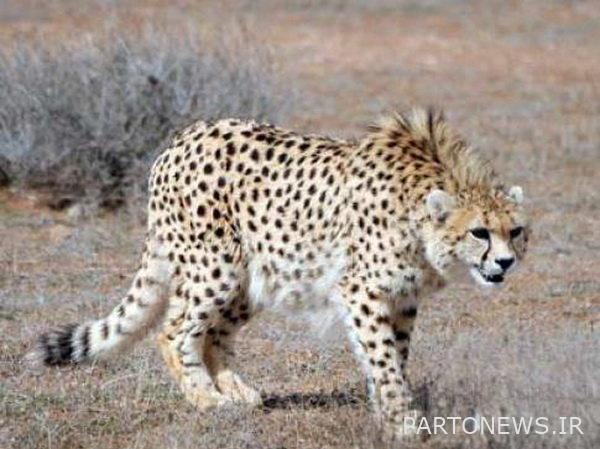We have only 3 female cheetahs in the country

According to the Moj news agency, the natural deputy of the Environment Organization said in a press conference this morning: the lack of funds in the Environment Organization hinders the implementation of projects and regulatory and executive discussions.
Akbari said: out of 12 adult cheetahs in the country, only 3 are female, which is endangered with the current conditions of the Iranian cheetah generation.
According to the natural deputy of the Environment Organization, the Iranian yellow deer species has been in captivity for more than 50 years, and sometimes we do not have the habitat to release them.
Akbari said: “According to the latest census, the species population of the country has decreased by 10%, which can be attributed to the widespread outbreak of plague in 8 provinces, influenza, drought and animal shelter, which leads to livestock disease.” And has become human.
According to Akbari, this year we issued 81 hunting licenses, which we have set the age of the species according to the rules above 7 years.
The Deputy Minister of Natural Environment of the Environmental Protection Agency said: “Unauthorized people drive their vehicles to protected areas, where they compress the soil and cover the soil, and in those areas, they produce waste.”
Akbari said: “We are also witnessing an increase in cave tourism in the country, where some species specific to Iran live in some caves, but another body is in charge of protecting the areas, and those devices should also be demanded.”
We are not responsible for rain loss in Kenya / Safadasht Zoo is one of the best
Also, the Director General of the Wildlife Protection and Management Office of the Environmental Protection Organization said: Safadasht Zoo is one of the centers that has provided the necessary standards in terms of feeding, care and standards for keeping animals.
Montazemi said: “We are still waiting for the autopsy answer about the lost sea lion Boris in Safadasht, and it should be taken into account that most of the species in our zoo are old and this could happen anywhere else.”
Regarding the opposition to the presence of rain at the British Zoo, Montazemi said: “The chimpanzee rain at Eram Zoo, which perished in the Kenya Orphanage, is not under environmental supervision, and his departure should have been at the request of the Zoo. Eram Zoo requested his presence.” In Kenya, and all arrangements were made through the Eram Zoo, so the Eram Zoo must be held accountable.
Influenza deposition in the heart of Miankaleh wetland / Danger of disease outbreak in migratory flamingos
The Deputy Minister of Natural Environment of the Environmental Protection Organization said: “In the last 2 years, due to water shortage, the spread of disease and hunting, we had heavy losses in Miankaleh, and we are looking for a solution to prevent it from happening again.”
According to Akbari, Miankaleh wetland, like other wetlands, needs dredging, but some believe that the disease has deposited in the bottom of the wetland and by dredging this disease again, it will cause heavy losses. Also, despite the low credits, it is not possible to solve the sewerage system in the region and villages, where people dump sewage and agricultural pesticides in the wetland, and this may lead to the loss of birds.
Akbari said: long-term operation in Fereydoun Kenar has caused a lot of damage to this habitat. No hunting permits were issued to birds in 1400, but the livelihoods of many people are tied to this habitat and they have built livestock for a long time and spend their day hunting a few birds. Manual feeding by rangers prevents migratory birds from entering livestock.
The Deputy Minister of Natural Environment of the Environmental Protection Organization said: “We had more than 100 bird deaths in Miqan Wetland, and collecting carcasses is very difficult because it may transmit the disease to humans or surrounding poultry farms.”
The population of the country’s environmentalists is less than the teachers and police of a city
Akbari said: “Three factors cause the destruction of habitats, roads, mines and overgrazing of cattle, due to climate change, the country’s pastures have decreased and this has led to the presence of cattle in protected areas that can cause serious damage to our habitats.” Be.
According to Akbari, we have 100 species specific to Iran in the country’s habitats, and we have given all the available capacity to preserve the habitats. In some cases, we provide these violators and habitat destroyers to the judicial authorities, which will not be dealt with.
The Deputy Minister of Natural Environment of the Environmental Protection Organization said: “In the law, we do not have the infrastructure to demand from the Ministry, and this ministry acts freely to build roads anywhere.”
According to Akbari, there are mines in 12% of the protected areas of the country, and abandoned mines are being explored for start-ups.
.

